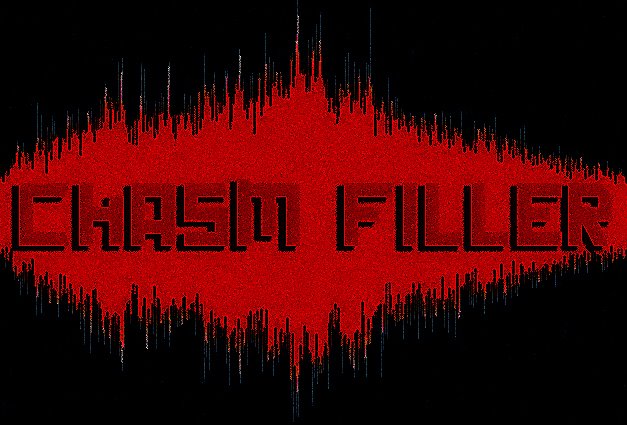 "The most telling description of Henry Cow's music comes from the movement they started, Rock In Opposition (henceforth denoted RIO). Their music truly is "in opposition." It pounds with the fury and intensity of rock music, but it cannot be called "rock." It shows the intelligence and musical knowledge of classical music, but it refuses to fit into any established style. It has plenty of dissonance and avant-garde tendencies, and it certainly challenges the listener, but it does not drive the listener away. Above all, though, it is in opposition to the commerciality of music, and this music is certainly not commercial. They started as a fun, jazzy Canterbury style prog band (Legend), gradually moving in a more avant-garde direction (starting on Unrest). In Praise of Learning, a collaboration with Slapp Happy, saw them moving in a more purely avant-garde direction, but it faltered slightly at times, failing to live up to their first two releases (though their other album with Slapp Happy, Desperate Straights, is fantastic). On Western Culture, however, they take the best elements of In Praise of Learning, tighten them, and the result is a masterpiece.
"The most telling description of Henry Cow's music comes from the movement they started, Rock In Opposition (henceforth denoted RIO). Their music truly is "in opposition." It pounds with the fury and intensity of rock music, but it cannot be called "rock." It shows the intelligence and musical knowledge of classical music, but it refuses to fit into any established style. It has plenty of dissonance and avant-garde tendencies, and it certainly challenges the listener, but it does not drive the listener away. Above all, though, it is in opposition to the commerciality of music, and this music is certainly not commercial. They started as a fun, jazzy Canterbury style prog band (Legend), gradually moving in a more avant-garde direction (starting on Unrest). In Praise of Learning, a collaboration with Slapp Happy, saw them moving in a more purely avant-garde direction, but it faltered slightly at times, failing to live up to their first two releases (though their other album with Slapp Happy, Desperate Straights, is fantastic). On Western Culture, however, they take the best elements of In Praise of Learning, tighten them, and the result is a masterpiece.Unlike previous releases, Western Culture is entirely instrumental and entirely composed, which is a large part of why it is their best work. While their improvisations often succeeded, they also often didn't. Their compositions, on the other hand, almost always were highlights on their respective albums. As for the vocals, they are simply unnecessary here, as the music tells a potent story (two actually) without the need for Chris Cutler's overly preachy lyrics. Western Culture is split into two halves, each telling its own story. The first, "History and Prospects," is a three part musical representation of the decay of western society (Henry Cow were far left politically). The second, "Day By Day," seems to look for equality in everyday life, as is highlighted by final track, "Half the Sky," whose title comes from the Chinese proverb, "women hold up half the sky." Not coincidentally, "Half the Sky" was a collaboration between Lindsay Cooper (who wrote the rest of "Day By Day") and Tim Hodgkinson (who wrote "History and Prospects"). Those familiar with the band's earlier work might be dismayed to learn that Chris Cutler and Fred Frith do not have any songwriting credits, but have no fear, for those songs are on Art Bears' excellent Hopes and Fears album.
"History and Prospects" opens with the mind-boggling "Industry," which is the band's single greatest achievement. An exercise in listenable dissonance for the first six minutes, it builds up to a pounding climax that features what is, quite frankly, the best drumming I have ever heard. This entire CD redefines the notion of a drummer's role in the band, as Chris Cutler does not limit himself to just rhythms, but instead creates his own musical themes with his trademark "pots and pans" style drumming. Indeed, one of the most compelling moments on Western Culture comes on "Falling Away" (the first part of "Day By Day"), where Cutler duels with Lindsay Cooper on what I believe is bassoon (or some other reed instrument). But, returning to "History and Prospects," don't be worried that Western Culture falters after opening with "Industry." The controlled chaos of "The Decay of Cities" and the faint, desperate, despairing saxophone whine of "On the Raft" are worthy follow-ups to "Industry."
Whereas "History and Prospects" largely focused on dissonance and Cutler's drumming, "Day By Day" features reed instruments prominently and is far less overbearing. Indeed, when "Falling Away" explodes into the racing reed instrument theme about a minute in, it wouldn't be a stretch to call it bouncy. It's still no easy listen — "Look Back" is similar to the darkness and despair of Univers Zero's Heresie – but it's more accessible for the newcomer to Henry Cow's music. Even "Half the Sky," which features more of the whining saxophone that colored "On the Raft," can't stay bleak for long, featuring happier reed sections later on.
Henry Cow left the world with a rich musical history — four studio CDs and the legendary Rock In Opposition movement. Even after they disbanded, Chris Cutler and Fred Frith would go on to produce plenty of excellent music in bands such as Art Bears, News From Babel, Skeleton Crew, Cassiber, Massacre, and far more (I don't like all of these bands, but they all feature Cutler and/or Frith). However, Western Culture is the clear masterpiece of the many Henry Cow and related offerings, a stunning slice of perfection that is essential for anyone interested in avant-garde rock music, or even just really good drumming. It takes a while to get used to, but once it hits, it hits hard. Needless to say, I give it my highest recommendation." - Aaron N.
Henry Cow's most potent recorded statement.
Industrious
















































